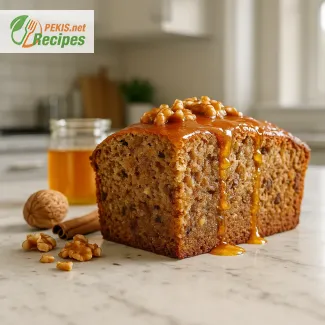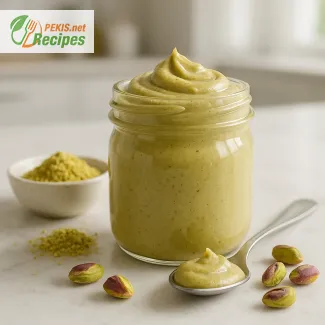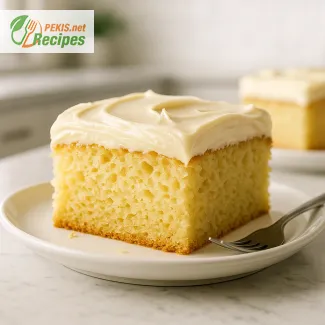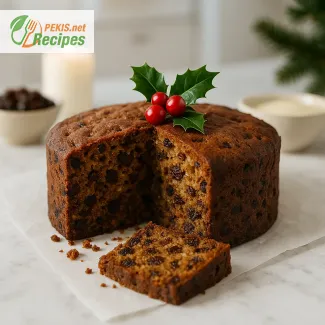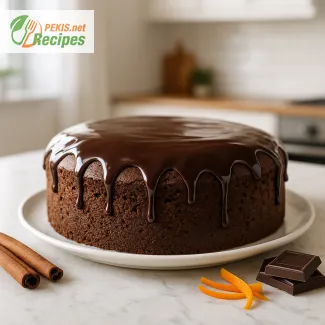
A gourmet twist on traditional baklava with hazelnut praline layers
Discover a modern take on this crispy, honey-soaked dessert favorite
When you think of baklava, you likely imagine delicate layers of paper-thin pastry, sticky-sweet syrup, and a satisfying crunch of nuts. This version elevates the classic by introducing hazelnut praline, a rich, silky spread made from roasted hazelnuts and caramelized sugar, layered between sheets of crisp filo pastry. The result is a flaky dessert that balances deep, nutty richness with golden sweetness — a perfect union of texture and flavor.
Hazelnuts are not only a luxurious ingredient but also a defining feature in many regional interpretations of baklava. In this recipe, they’re taken a step further: transformed into a smooth praline that seeps into the filo as it bakes, adding a soft, buttery contrast to the crisp pastry. This interplay between textures is one reason why this variation has become a sought-after dessert for special occasions, from elegant dinners to festive celebrations.
Why hazelnut praline makes all the difference
Unlike chopped nuts alone, hazelnut praline introduces a creamy, caramelized depth that enhances the overall profile of the dessert. The praline acts as both a filling and a flavor enhancer, melting slightly in the oven and infusing the layers with a roasted aroma and delicate sweetness. While traditional baklava relies on spices like cinnamon or cardamom for warmth, this recipe achieves complexity through caramelized nuts and honey syrup.
The addition of praline also offers a smoother bite. As it melds with melted butter and the baking syrup, it binds the pastry in rich cohesion. For those who find the crunch of conventional baklava too dominant, this softer alternative provides a more balanced mouthfeel without losing its signature crisp top.
The art of filo and how to work with it
Working with filo pastry requires patience and the right technique, especially when creating a dessert as layered and structured as baklava. Each sheet must be handled gently, brushed with melted butter, and aligned perfectly to ensure even baking. A key detail in this recipe is allowing the hazelnut praline to spread thinly between certain layers — not every one — so that the texture remains light and flaky, never soggy or dense.
It’s also important to cut the baklava before baking. This allows the syrup to fully penetrate every crevice, ensuring that each bite is sweetened just right. After baking, a warm honey syrup is poured over the hot pastry, allowing it to soak through the layers and lock in moisture.
Honey syrup: the finishing touch
No baklava recipe would be complete without a fragrant syrup. In this version, the syrup is made from pure honey, a touch of lemon juice, and a splash of rosewater or orange blossom (optional), depending on the desired floral note. The syrup is simmered until slightly thickened, then poured over the hot pastry so that it absorbs evenly.
This infusion gives the dessert its characteristic gloss and sticky sweetness, while also balancing the richness of the praline. The use of honey over refined sugar lends a more natural sweetness and enhances the roasted notes of the hazelnuts.
Modern presentation for classic indulgence
This hazelnut praline baklava isn’t just a dessert — it’s a centerpiece. Serve it in diamond-shaped portions on a polished tray, garnished with a dusting of finely chopped hazelnuts or edible gold flakes for extra visual appeal. The layers catch the light beautifully, revealing the golden filo and caramel tones of the praline.
Whether served at weddings, holiday tables, or elegant dinner parties, this variation of baklava invites admiration before the first bite. And once tasted, it’s remembered for its silky richness, delicate crunch, and that distinctive nutty-caramel flavor that sets it apart from any ordinary pastry.
1. Prepare the syrup
In a saucepan, combine water (120 ml / ½ cup), sugar (100 g / ½ cup), and honey (150 g / ½ cup). Heat over medium heat until the sugar dissolves completely. Add lemon juice (15 ml / 1 tbsp) and optional orange blossom or rosewater (5 ml / 1 tsp). Simmer for 8–10 minutes until slightly thickened. Remove from heat and let it cool completely.
2. Prepare the nut mixture
Toast the hazelnuts in a dry pan or oven until golden and fragrant. Allow to cool, then finely chop. Mix chopped hazelnuts (200 g / 1 ½ cups) with hazelnut praline paste (120 g / ½ cup) until you get a spreadable filling.
3. Assemble the baklava
Preheat the oven to 175 °C (347 °F). Grease a 20x30 cm (8x12 inch) baking tray with some of the melted butter. Place one sheet of filo in the tray and brush lightly with butter. Repeat this step for 5 sheets, brushing each layer with melted butter.
Spread one-third of the hazelnut-praline filling over the filo. Add 5 more sheets of filo, brushing each with butter. Repeat the layering and filling two more times, ending with a final layer of filo (5 sheets), all brushed with butter.
Using a sharp knife, cut the baklava into diamonds or squares. Bake for 40–45 minutes, or until golden brown and crispy.
4. Add the syrup
Once out of the oven, immediately pour the cooled syrup evenly over the hot baklava. Let it soak at room temperature for at least 4 hours, or preferably overnight.
5. Garnish and serve
Top with crushed hazelnuts (30 g / 2 tbsp) before serving. Serve at room temperature.
Elevating your homemade baklava: expert upgrades and flavor tweaks
Smart improvements for flavor, texture, and a healthier indulgence
Reimagining the beloved classic baklava doesn’t mean losing its heritage—it means refining it with modern ingredients and techniques that enhance both taste and texture. The hazelnut praline version is already a luxurious take on tradition, but there’s room for thoughtful changes that can bring out even more complexity, depth, or nutritional value. From switching sweeteners to adjusting the nut blend, each choice contributes to the final flavor profile and overall quality of the dessert.
Upgrading the nut blend for richer flavor
While hazelnuts deliver a buttery and earthy base, consider incorporating pistachios or walnuts into the mixture. A 50/50 blend of hazelnuts and pistachios creates a more vibrant, slightly green filling with brighter notes. Walnuts bring mild bitterness that cuts through the sweetness, ideal for balancing the rich syrup. Toasting the nuts before mixing is essential—it intensifies aroma and adds dimension.
You can also add a touch of sea salt to the filling (around 1 g / ¼ tsp) to contrast the sweetness and highlight the nuttiness, offering a more sophisticated finish.
Alternative sweeteners and syrups
The honey syrup is central to the baklava’s appeal, but it can be personalized in several ways. Replacing white sugar with coconut sugar or raw cane sugar introduces caramel notes and a lower glycemic profile. For a deeper, more molasses-like flavor, try date syrup or maple syrup, which pairs beautifully with the roasted hazelnut praline.
Citrus zest—especially orange or blood orange—added to the syrup infuses it with freshness and balances the nutty base. Likewise, swapping lemon juice with apple cider vinegar offers acidity while maintaining complexity.
Boosting the praline filling
The hazelnut praline itself can be homemade for better quality and control. Blending roasted hazelnuts with a small amount of caramelized sugar and neutral oil yields a silky, customizable paste. Want more crunch? Stir in some finely chopped caramel shards just before layering.
For extra aroma, add vanilla bean paste or a drop of almond extract into the praline before spreading—it subtly rounds the flavor and enhances the nutty profile.
Common mistakes and how to avoid them
A flaky, golden result starts with mastering filo pastry handling. Always keep unused sheets covered with a damp towel to prevent drying out. Skimping on butter brushing leads to dry or uneven layers—each sheet needs full but light coverage.
Another common error is pouring hot syrup onto hot baklava, which can make the pastry soggy. Let the syrup cool completely and only pour it onto just-baked, hot pastry. This contrast is crucial for proper absorption without collapsing the crisp texture.
Be careful not to overbake. A too-dark crust may signal burnt nuts inside. The right doneness shows golden, not brown, upper layers.
Making it more wholesome
For a healthier twist, substitute half the butter with light olive oil or avocado oil. These oils add good fats and slightly grassy notes that complement roasted nuts. Filo pastry made with whole wheat flour is another smart swap, introducing fiber without compromising flakiness.
Reduce total sugar by limiting syrup quantity—use just enough for moistness and gloss. Alternatively, drizzle a natural fruit reduction, such as fig or pomegranate syrup, over individual servings.
If you're serving guests with dietary restrictions, use plant-based butter and ensure the filo is vegan. Gluten-free filo alternatives are also available and can work well with careful layering and baking at slightly lower temperatures.
Enhancing aroma and spice complexity
Though traditional baklava is often lightly spiced or not at all, you can add depth by including cardamom, clove, or allspice in the nut mixture. A small pinch (0.5 g / ⅛ tsp) goes a long way. Even a dusting of cinnamon between layers can shift the profile to something warmer and more seasonal.
For a Mediterranean flourish, add a few drops of orange blossom water or rosewater to the syrup. Just be cautious—these are potent and can overpower if overused. A balance of 5 ml (1 tsp) is usually enough for a subtle floral background note.
Why homemade always tastes better
Store-bought baklava often lacks the freshness, customization, and ingredient quality that elevate the experience. Homemade versions allow you to choose premium nuts, adjust sweetness, and create tailored fillings. You control the crispness, the richness, and even the shape—diamond-cut pieces, mini rolls, or layered squares. Plus, the aroma that fills your kitchen as it bakes is reason enough to craft it yourself.
Ultimately, your homemade hazelnut praline baklava becomes more than dessert—it’s a signature creation, adapted to your preferences and enhanced by your technique. With just a few small upgrades, a timeless treat becomes an unforgettable one.
Allergens present in the recipe:
- Gluten (in filo pastry)
- Nuts (hazelnuts)
- Dairy (butter)
Tips for allergy-friendly alternatives:
- Replace filo pastry with gluten-free filo sheets or thin rice paper layers.
- Use plant-based butter or margarine for a dairy-free version.
- Replace hazelnuts with seeds like sunflower or pumpkin if nut allergy is present. Substitute praline with a seed butter blend.
Vitamins and minerals per serving (approximate):
- Vitamin E: 4.2 mg – supports skin health and immune defense
- Magnesium: 52 mg – contributes to nerve and muscle function
- Calcium: 32 mg – important for bone health
- Iron: 1.1 mg – supports oxygen transport in the body
- Zinc: 0.9 mg – contributes to immune function
- Vitamin B6: 0.08 mg – helps in energy metabolism
Antioxidants per serving (approximate):
- Phenolic compounds (from hazelnuts): 180 mg – combat oxidative stress
- Flavonoids (from honey and nuts): 90 mg – support cardiovascular health
- Carotenoids (trace): 12 mcg – contribute to eye health

